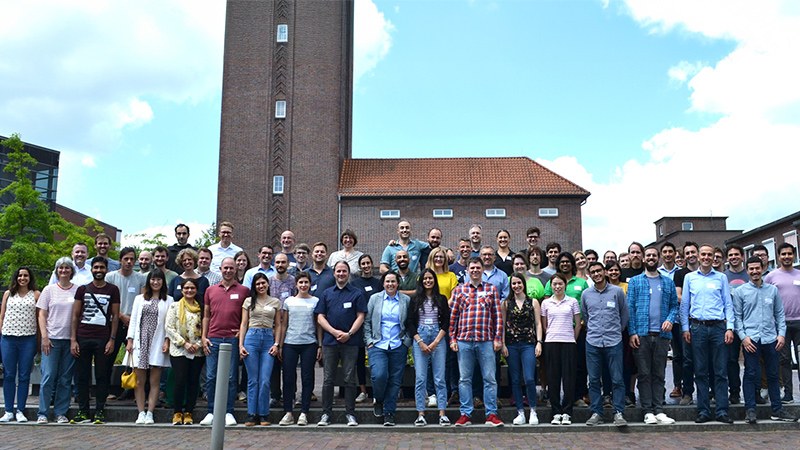Overview: The Institute's history
The Institute of Networked Energy Systems has existed since June 2017. However, the current research portfolio is based on developments that date back far beyond the official founding date.




In the early 1970s, the Club of Rome published its study "The Limits to Growth", which was to shape global energy research in two ways: firstly, it predicted the finiteness of many raw materials, and secondly, it was one of the first major studies to be based on computer modelling.
As a result, interest grew in scientifically analysing possible future scenarios for the energy supply. Against this backdrop, in March 1974, the Programme Group "Applied Systems Analysis" was established at the German Research and Testing Institute for Aviation and Space Flight (DFVLR, the former name of the DLR). One of its first studies was "Non-fossil, non-nuclear energy sources for tomorrow", commissioned by the Federal Ministry of Research.

Just two years later, the DFVLR decided to establish a new research area, "Energetics", at its Stuttgart site. At the same time, Dr Joachim Nitsch took over as head of the "Energy Systems Study Group". As a systems analyst, Nitsch is today considered one of the most influential thinkers in his field and remained head of the group until 2005. The group, which was renamed the Department of "Systems Analysis and Technology Assessment" at the Institute of Engineering Thermodynamics in 1992, made a name for itself.
The "Energy Systems Study Group" achieved its first major scientific milestone with the comparative study "Expansion of secondary energy systems in the Federal Republic of Germany up to the year 2000", published in January 1981. This study, which was carried out within the framework of the Association of Large Research Institutions (AGF), analysed aspects such as possible flexibilities in energy infrastructure and distribution for the first time. Nitsch's team led the study, which involved numerous renowned research institutions and industrial companies.

The creation of energy scenarios characterised the work of the 1980s and 1990s, which was already closely linked to technological research at the DFVLR. The team's strength remained relatively constant with circa eight employees and was not significantly affected by the restructuring of the DFVLR in 1991, which resulted in the renaming of the institute to its current name, the German Aerospace Center (DLR).
However, the focus of systems analysis increasingly shifted towards renewable energies. In the 1990 book "Energy Supply of the Future", Nitsch's team dared to make an analytical forecast for the year 2050 for the first time. The scenarios included, among other things, the availability of renewable energy sources and supply infrastructures. One of the key findings at the time caused a stir in politics and the media: an energy supply based on renewable energies is feasible by 2050.

From the mid-1990s, the DLR System Analysis supported national policy development with numerous studies on the use of renewable energies in the energy supply system. In particular, the long-term scenario studies for the Federal Environment Agency and the Federal Ministry for the Environment up to 2012 provided a scientific basis for renewable energy policy in Germany during this period. To meet the increasingly complex demands of system modelling, the subsequent head of department, Wolfram Krewitt, initiated the development of the modelling tools REMix and AMIRIS between 2005 and 2008. These tools have been continuously further developed and now serve as an indispensable basis for numerous projects and studies at DLR.

A fundamental structural change was imminent for the Stuttgart systems analysts in mid-2017: the DLR was to deepen its systemic view of the ongoing energy transition under the umbrella of a newly established institute. The Oldenburg "EWE Research Centre NEXT ENERGY" was considered a suitable building block for the future "Institute of Networked Energy Systems". However, at that time, the research portfolio of the EWE Research Centre already included an Energy Systems Analysis department with around 40 researchers, which transitioned to the new institute in slightly modified form in mid-2017.
To avoid parallel structures within DLR, it was agreed to bundle Oldenburg and Stuttgart competencies under the umbrella of the new institute. This process was completed on 1 January 2021 after several years of preparation. The current structures and the retention of the Oldenburg and Stuttgart sites with around 80 employees in the Energy Systems Analysis department, bear witness to this branch of the institute’s history.
